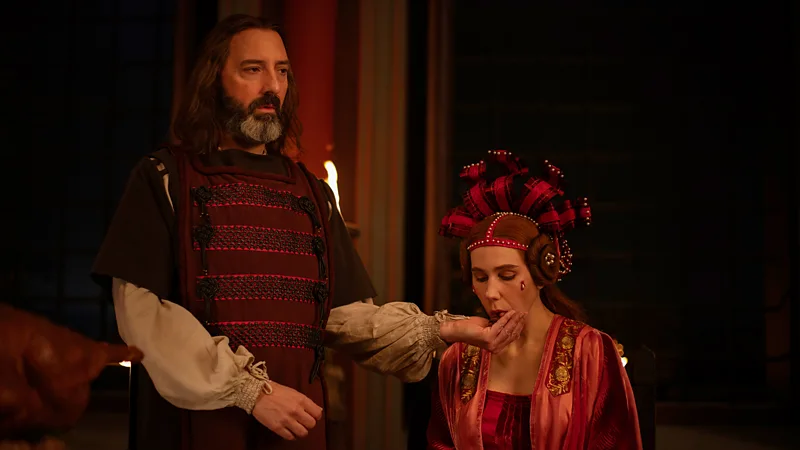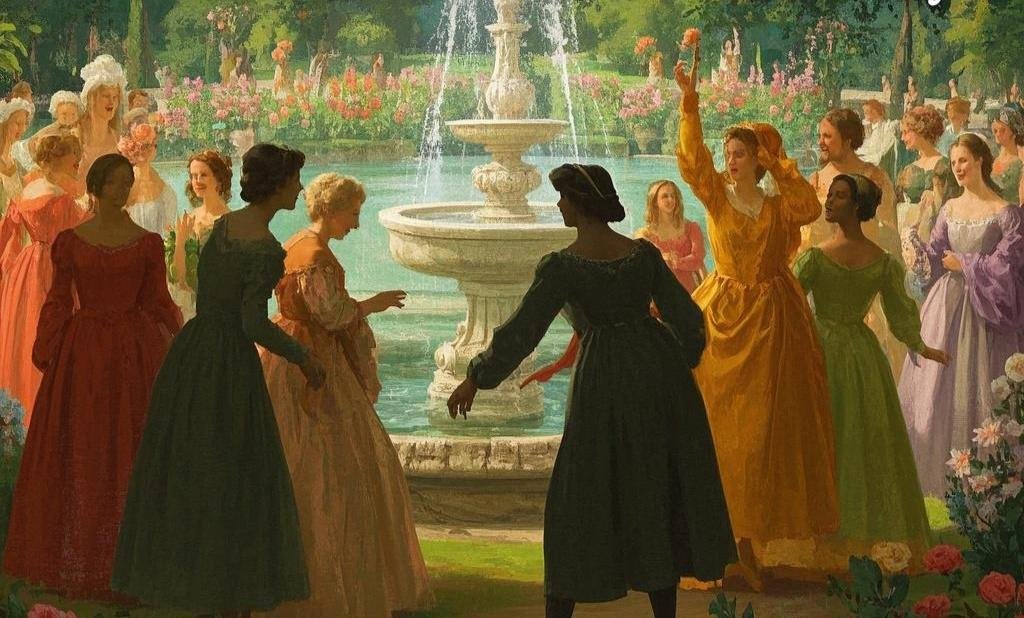"with over wrath: power hypocrisy, and play in the tale of the monk and the Abbott"

“Wit Over Wrath: Power, Hypocrisy, and Play in the Tale of the Monk and the Abbot”
Introduction:
Giovanni Boccaccio’s Decameron is renowned for its sharp satire, bawdy humor, and perceptive critique of religious and societal norms. The Fourth Story of the First Day, narrated by Dioneo, exemplifies this tone perfectly. Centered on a cunning monk who outsmarts his abbot after being caught in a scandalous tryst, the tale uses wit and irony to expose the hypocrisy within religious institutions. This review argues that the story not only entertains but also cleverly critiques the moral duplicity of those in power, using humor as a tool for both revelation and resistance.
Summary:
In a remote monastery in Lunigiana, a young monk, overcome by lust, seduces a peasant girl and brings her to his cell. Unbeknownst to him, the abbot hears the couple and prepares to punish the monk. However, the monk, realizing he’s been discovered, devises a plan: he pretends to leave for the woods and hands over his cell key to the abbot. Curious and tempted, the abbot enters the cell alone, seduces the girl himself, and locks the door. The monk, spying through a crack, witnesses everything. When the abbot later tries to reprimand him, the monk cleverly uses his knowledge of the abbot’s sin to escape punishment, and the two silently agree to cover up the incident. It’s implied that the girl is welcomed back again in secret.
Analysis:
One of the most striking elements of this story is its use of dramatic irony. The reader, aware of both the monk's and the abbot’s actions, is placed in a privileged position, which heightens the comedic and satirical effect. Dioneo’s tale plays with audience expectations—just as we brace for the monk’s punishment, the story swerves into unexpected territory, revealing the abbot’s equal, if not greater, moral failing. This subversion reinforces Boccaccio’s thematic concern with appearance versus reality, especially within institutions meant to embody virtue.
Character motivations are portrayed with clarity and a touch of caricature. The monk is lustful but clever, guided more by instinct than conscience. Yet, he is not condemned; rather, his quick thinking is celebrated. The abbot, meanwhile, initially appears pious and dutiful, but is easily swayed by the same carnal desires. His internal monologue, rationalizing his sin as a rare opportunity sent by God, is one of the story’s most biting satirical moments. It encapsulates how those in religious authority often manipulate doctrine to serve their own ends. Boccaccio’s decision to have the abbot use the same excuse the monk might have used ("a sin that's hidden is half forgiven") further levels the moral playing field between them.
The theme of hypocrisy is central. Both the monk and the abbot break their vows, yet only one is initially threatened with punishment. The tale critiques not just personal failings, but the unequal distribution of justice within religious hierarchies. The abbot's willingness to punish the monk—after committing the same act—exposes the dangers of unchecked power. In the end, it’s not virtue but mutual guilt and the fear of exposure that restore a kind of balance.
Dioneo’s position as storyteller adds another layer. Known in the Decameron for his irreverence and cleverness, Dioneo often selects tales that challenge authority and celebrate individual cunning. His tale fits this mold, offering a not-so-subtle jab at the corruption within the Church. The humor is bawdy and playful, but it carries a deeper critique that would have resonated with contemporary audiences—many of whom were disillusioned with religious institutions following the Black Death and widespread clerical corruption.
Personal Response:
I found this tale both amusing and thought-provoking. What stood out to me most was the monk’s cool-headedness in a moment of crisis. Rather than spiraling into panic, he constructs a trap that not only saves him but also exposes his superior’s hypocrisy. The scene in which the abbot seduces the girl, fully convinced of his own discretion, was both ridiculous and revealing. While the story is humorous, its undercurrent of critique gave it weight. I appreciated how Boccaccio used comedy to mask a more serious commentary on power and morality.
Conclusion:
The Fourth Story of the First Day is a masterclass in satirical storytelling. Through its portrayal of two supposedly celibate men succumbing to temptation and then silently colluding to protect themselves, it lays bare the moral duplicity often hidden behind clerical robes. Boccaccio’s wit ensures the tale is entertaining, but its insight into human behavior, institutional hypocrisy, and the dynamics of power remain strikingly relevant. In an age still grappling with questions of authority and integrity, this tale reminds us that humor can be a powerful lens for truth.







